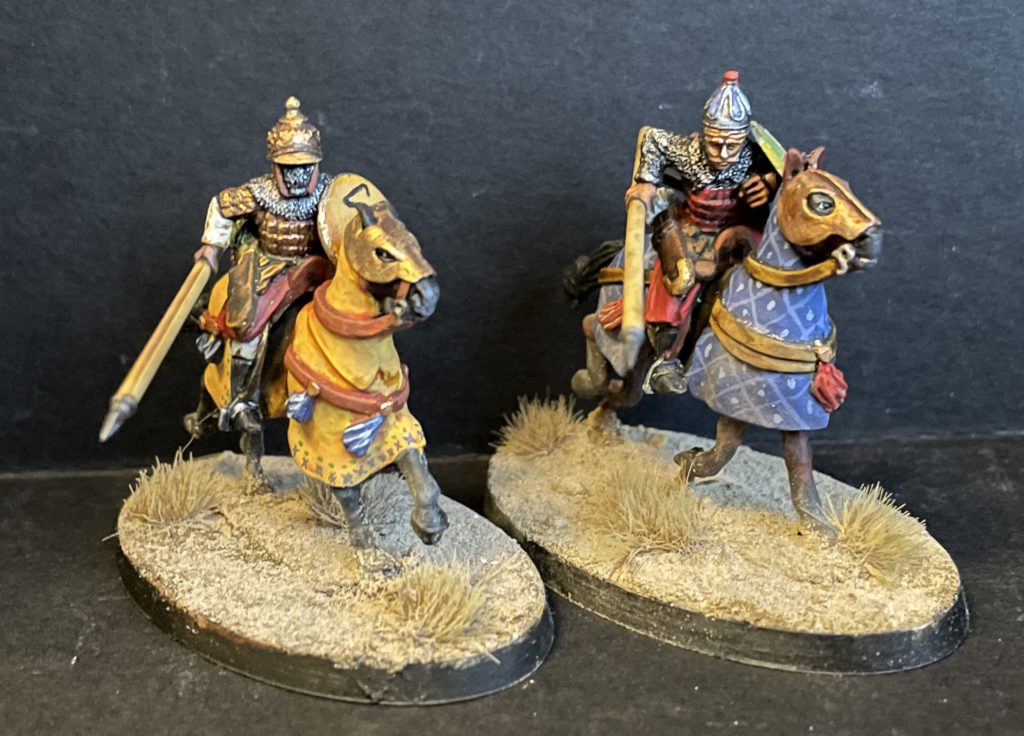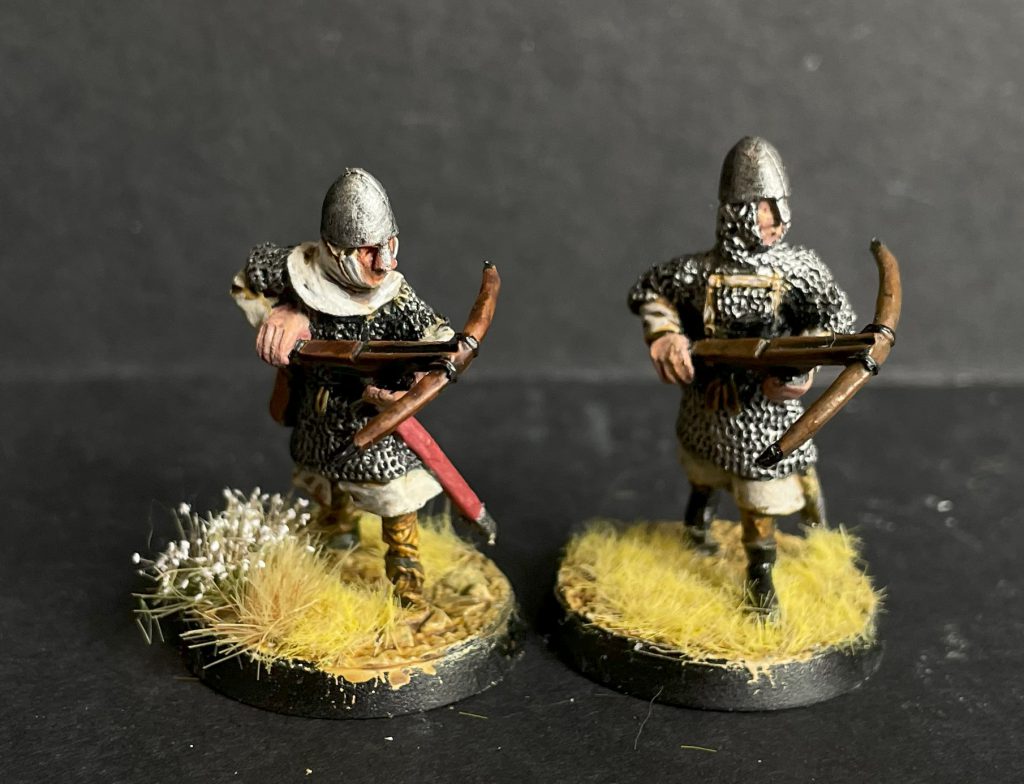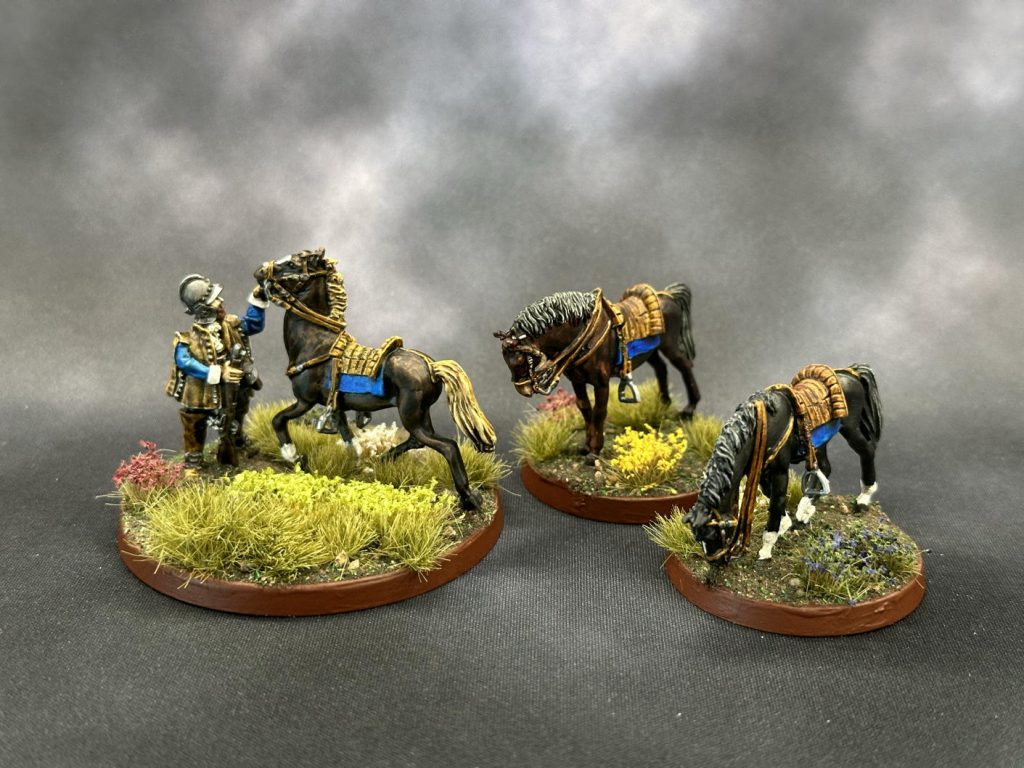There’s never been a better time to dive into historicals miniature gaming. We’re in a massive renaissance of kits and manufacturers, plastic sprues, 3D printing, home designs and more multi-part posable models than we’ve ever had before. It seems like every month brings us a fantastic new historicals kit in periods and scales that have never seen plastic before, while the cottage industry of 3D sculptors is opening up the entirety of world history to miniatures gamers. What a time to be gaming!
Until recently though, the building blocks of historical gaming have been metal. Lead, pewter, white metal, whatever they are, there’s a single universal historicals experience no matter the area or period – a bunch of small ziploc bags arriving filled with slightly dusty metal miniatures. As we head into 2025 though, is there still a space for metal models in our hobby? Are they all going to be replaced with resin, siocast or something else even stranger (galalith minis, anyone?)? Will they stick around, or will we see the giants of plastics manufacture slowly squeeze out metals until you’re only buying them at car boot sales? Are historicals gamers done with metal minis?
We opened up the gates of the Goonhammer Historicals star fort to a Putney debate on metal minis (and why we mostly love them).
Metal Minis – Love them or Hate Them?
Max: I quite like metal minis. There’s a kinesthetic pleasure in lifting up a small man that weighs more than you think it should. For me, there’s also a really compelling sense of nostalgia; I remember playing with my grandad’s old tin soldiers, sneaking into the study to look at my uncle’s Napoleonics and eagerly eyeing up weighty 40K blister packs at the local hobby shop.

Aside from that they’re truly a pain. Assembly without superglue activator is a guaranteed afternoon of frustration. Once painted they seem predestined to chip unless you’re following a very prescriptive formula; a good scrub, a solid primer and layers upon layers of varnish to keep them intact for any regular tabletop action. And whilst nothing quite beats lead for heft, it’s probably for the best if it left all white metal mixes for good. It’s not something I ever worried too much about until I had a baby and then suddenly having painted miniatures stored haphazardly in KR cases under a bed became a serious biohazard. That’s even before I mention my lab-like clean room approach for cleaning flash. Is this parental paranoia? Probably. Are resin shaving any better? Probably not.
Ilor: I’m an old-school gamer, having started back in the days when metal miniatures were pretty much your only option. And honestly I don’t get the hate. I don’t find that metal minis (when properly cleaned, primed, painted, and sealed) are any more subject to wear or chipping than plastic figures. Like, it’s just not a thing and it makes me wonder what other people are doing (or not doing) that they’re having all these chipping issues. I am honestly mystified, because I just don’t see it. And Max’s comments about the issues with superglue speak more to trying to use old glue than any issue with the minis themselves. When I let my CA++ glue get old, assembling anything without frustration is a tall order. With fresh superglue, I need to be careful about where I affix my metal minis to their metal fender-washer bases because the bond is very strong and sets very quickly.
Lenoon: I started thinking about this the other day when buying a particularly fantastic metal mini – the Footsore Mamluk Champion on foot. This guy is everything I love about metals; textures, lovely detail, fine scaling, a single fantastic pose. It’s the kind of model that really speaks to what metal minis still do – a sculptor creates one particular work of art, then you buy it and paint it. The downsides of metal – converting, paint chipping, specific and weird types of miscasting – aren’t overcome by that relationship you build with the sculptor when you’re working on a lovely mini.

Bair: As you might have seen I’m newer to historicals and metal minis seem to be part and parcel with some collections. I’ve gotten and picked up a handful of metal minis including the Bad Squiddo Shieldmaidens, some Footsore Vikings like Ragnar, and a set of Gripping Beast Shieldmaidens as well. Putting these next to Victrix plastic Vikings the quality is generally good, even if some faces aren’t quite as nice in the metal, and have to echo that the Footsore ones specifically really stand out as fantastic. I like metal minis when they’re 1 or 2 pieces, with maybe a shield to have to glue on as well. Once you get past that then I like them much, much, less and wish I was dealing with a nice resin or plastic kit instead.
Mugginns: I like metal minis mostly because for some reason they can seem more characterful. You know someone spent time hand sculpting this mini to look a certain way, with a certain pose that is often not available in plastic. Guy Wearing A Barrel Because He’s Being Punished for Inebriation just isn’t something you’re going to find on a plastic sprue.
Momma Negan: Metal minis are just superior. I mean don’t get me wrong, plastics can be fantastic, and companies are getting around to doing some fantastic plastic kits. But overall, nothing beats the detail afforded to metal sculpts. Sure, they come with all sorts of wonk and jank, but that is just because they were hand sculpted(in most cases) and so aren’t nearly as ‘picture perfect’ as a lot of today’s plastic kits are. Sure we also had hand sculpted plastic kits(see most of the old Warlord Games sprues), but given the medium of plastic a lot of the details don’t come across as sharp. It is getting better, but for some inexplicable reason, I just think metal minis are prettier. Especially as mentioned above they can lead to some very unique poses that just wouldn’t be doable in plastic or would entail a great bit more effort than a plastic sprue.
Variance Hammer Eric: I actually got my start in miniature wargaming with plastic models, and then headed towards metals when I started my 3rd Edition Witchhunters army for Warhammer 40K. There was something very special about those figures – something that plastic didn’t approach for the better part of two decades. I’ve continued to like them and collect them – I’ve got a fairly substantial Bolt Action/Chain of Command paratroopers force from Empress Miniatures that’s all metal, and I’m pretty sure by number (and certainly by weight) my Thirty Years War collection is more metal than plastic or resin.
Why Should We Still Be Buying Metal Minis?
Lenoon: Metals add variety, specific poses, weird details, or wonderful character minis to a mass scale army. I love a good range in metal specifically designed to complement a different plastic range. That’s the flexibility (and low comparative cost) of metal casting, you can do something like Bloody Miniatures or Calpe and design the “weirdoes” that fit into more standard offerings from other people My French Imperial Guard are mostly Victrix and Perry plastics, but each unit has at least one or two metals from smaller ranges in it. Having said that, if those minis were cast in resin, would I miss metal? No. Especially the horses. I cannot stand metal horses, even though the thought of bendy resin horses fills me with absolute horror.
Ilor: They look better! One of the things that often gets overlooked with metal miniatures is the subtle surface texture. Whereas injection-molded plastic can be incredibly smooth, even flat, ostensibly smooth surfaces in metal will have a very fine-scale roughness to them. Unless you prime the bejeesus out of them, this roughness will carry through to the paintjob, giving the painted miniature a slightly different (and to my eye quite pleasing) surface effect.

Next let’s talk about detail. While it is true that plastics have come a long way in the last two decades, there is something about the depth and crispness of detail that is achievable in metal minis that plastics can’t seem to quite duplicate less. Where I really notice this is in extremely fine details, especially on miniatures for Infinity, where even basic line troopers have a plethora of tiny buckles, snaps, and zippers. All of these are executed in metal with nice, crisp, sharp edges that are extremely easy to pick out when painting. The same objects in molded plastic will have softer detail, with more rounded relief.
Finally, weight is a consideration as well. A figure’s overall heft is a double-edged sword – metal minis are less likely to get knocked about than plastic figures (which can go flying at the slightest provocation). The trade-off, of course, is that if your metal figures do take a tumble, they’re more likely to be damaged. Sometimes that damage can be fixed – I’ve out-and-out broken off more plastic weapons from minis over the years than metal ones, whereas the protruding-bits of damaged metal minis can often simply be bent back to their proper form. But I’ve had plastic minis survive a fall from a table onto a hard floor; metal, not so much.
Bair: For me, though, the peak of metal minis is and always will be the 6th edition Warhammer Fantasy Battle Dwarf range. Just the absolute best dwarfs that have ever been sculpted and I really believe that being hand-done and cast in a single piece (some with shields added) is the reason for a lot of the “character”. Big noses, big hands, exaggerated detail, it’s just perfect. Most of my current dwarf collection is made up of this range and the main (only?) reason I play any amount of Old World is simply because it looks so good on the table; love to push around blocks of heavy metal dwarfs and roll dice.

Metal minis are great for contrast paints, as funny as that might sound, because they just have so much depth to them that is never quite the same with resin or plastic minis. Most of the metal minis I’ve dealt with more recently are Burrows and Badgers, which are also all single piece models, and just paint up fantastically. Metal mini sculpting like this is confined to a near-2D sort of plane so the posing definitely gets a bit restrictive and creative, but think this is part of what leads to the “character” of metal models you hear old-time gamers speak so much about.
MommaNegan: One aspect that appeals to me as a collector specifically about metal minis are their longevity and reusability. While sure some acids can damage a metal mini, unless you intentionally try to fuck Up a metal mini, it will remain cleanable and reusable for decades or even centuries. The reason I can still paint little goblins from 1984 is, that they were metal, not brittle resin that is difficult to clean, nor plastic that can be destroyed by glue or spray can. Metal is a much better medium to preserve a miniature in.
If I go on eBay today and try to buy an old metal cast Napoleonic regiment from the last century, I can simply buy painted minis and strip them with some acetone. But if I want to buy plastic Napoleonics from this century, I would have to weigh whether or not I can fully clean the minis, whether or not I can fix any damage done by the primer, whether or not the way they were glued is to my liking, it’s so much more difficult to get these things in a state you can work with on your own terms.
VarianceHammer Eric: There’s something metal does uniquely well – the super-characterful vignette miniature that’s just never going to be produced at the scale to be worth it in plastic. A horse-holder for a unit of Dragoonn, a befuddled crew looking at their tank, things like that. I love adding those elements to my forces, and the combination of amenability to small-scale production and the hand-sculpted character of metal minis means these one off characterful models tend to pop up more in metal miniature ranges.

They’ve got a really appealing heft, and they’ve got character. To my mind, they’re perfect for adding flavor to a mass produced plastic force – giving enough variation, character, etc. to flesh out a force built out of more economical plastic for the rank and file. It’s easier to not notice that a pike block of 30 men is made up of the same four poses if the unit screening them is a bunch of unique and characterful poses, one guy firing two pistols while another carries off a barrel of wine. The other aspect is that because of the limits of hand sculpting, metal casting, etc., I find metal miniatures more approachable to paint. Both CAD-designed injection molded kits and a lot of resin 3D printed models have a sort of…unrestrained designed excess to them at the moment that makes painting them feel daunting. I rarely feel that way about metal models – they’re often one piece, take paint well, and generally don’t desperately cry out for painting in sub-assemblies, except maybe for shields.
Is the Future Metalless?
Lenoon: I think, eventually, it probably is. Not for a good long while, because there’s a lot of good metals out there, but I think we’ll slowly see it happen. Plastic, resin and siocast are getting cheaper and cheaper, and a lot of the old one man operations where someone was sculpting and spinning metal in their garage have closed or are closing. I can see a future where all metal sculpts are replaced with resin (urgh). I can’t see one where everything goes multi part plastic! Unlike GW, the ranges we play with are too varied and too specialised for everything to be covered by sprues, however nice the idea is.
Max: Despite all their issues, I think there’s a place for metal miniatures. You cannot beat them for tactile mass. It adds literal strategic weight to a maneuver and unless someone develops a ‘very heavy’ resin, I think there’s always going to be a niche market for people who like picking up miniatures and thinking “this is significant”. Or even just “ooo, you’re a big boy”.
Ilor: Ultimately, from a production standpoint cost is king. When I look at companies like Victrix, who are producing really good plastic kits at a fraction of the cost of a similar number of metal minis, it’s hard to see how large-scale production of metals can continue as anything other than boutique operations. I think you’ll still see metals for the 2-6mm scales because those are tiny enough that I’m not sure injection-molded plastic would work well, but certainly for 10-12mm and larger you’re already seeing a shift. In some ways this is a shame – I like my older metal Blood & Plunder minis much better than I like the newer plastics, for instance. But at the same time, I’m not going to argue with getting a bag of high-quality plastic soldiers for less than $1 per figure.

Bair: I’m not an expert on the matter by any means but it seems like metal casting and making for certain ranges is just much easier and affordable for companies to do. There may come a time, years from now, where plastics or 3D printing completely takes over resin/metal models but I can’t see that happening any time soon.
Mugginns: I still purchase and use a ton of metal minis. They’ll always have a strong presence in my forces because many of the conflicts I’m gaming are super niche; it’s not possible to make plastic minis and sell enough to make your money back. I think for that reason we’ll still see metal around for a long time – even with resin being more readily available.
VarianceHammer Eric: That small batch, weird figures niche could be filled by 3D printed miniatures, although I don’t think there’s as many of them as there could be, with so many designers busy working on Legally Distinct Chaos Space Marines and the like. And 3D printed resin is brittle as hell, even with fairly flexible resins. So for the moment I think metal minis niche is safe, and I suspect at the end of the day if the age of metal fades, it’ll have more to do with the economics of the actual material, rather than there not being a place for them.
Have any questions or feedback? Drop us a note in the comments below or email us at contact@goonhammer.com. Want articles like this linked in your inbox every Monday morning? Sign up for our newsletter. And don’t forget that you can support us on Patreon for backer rewards like early video content, Administratum access, an ad-free experience on our website and more.


